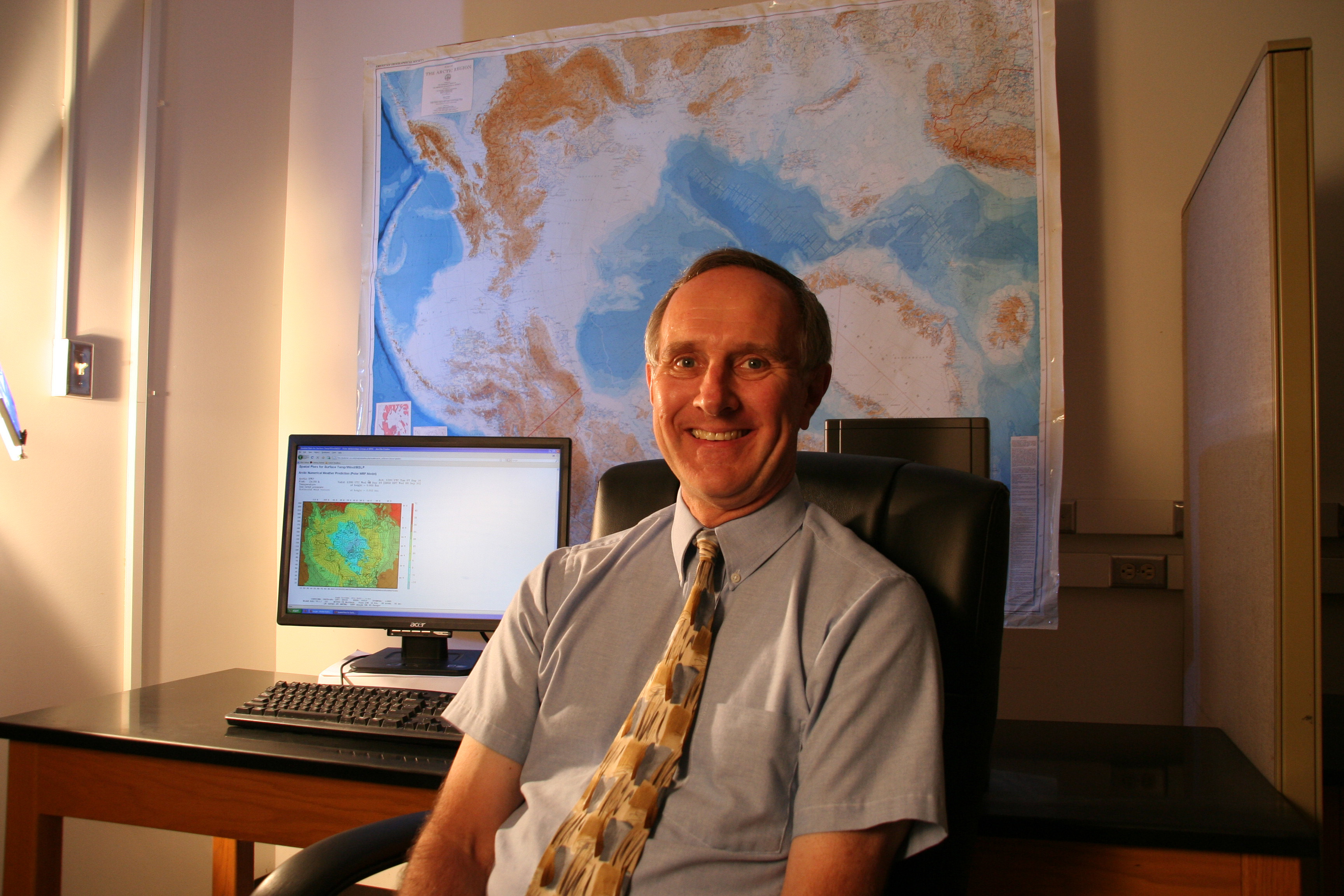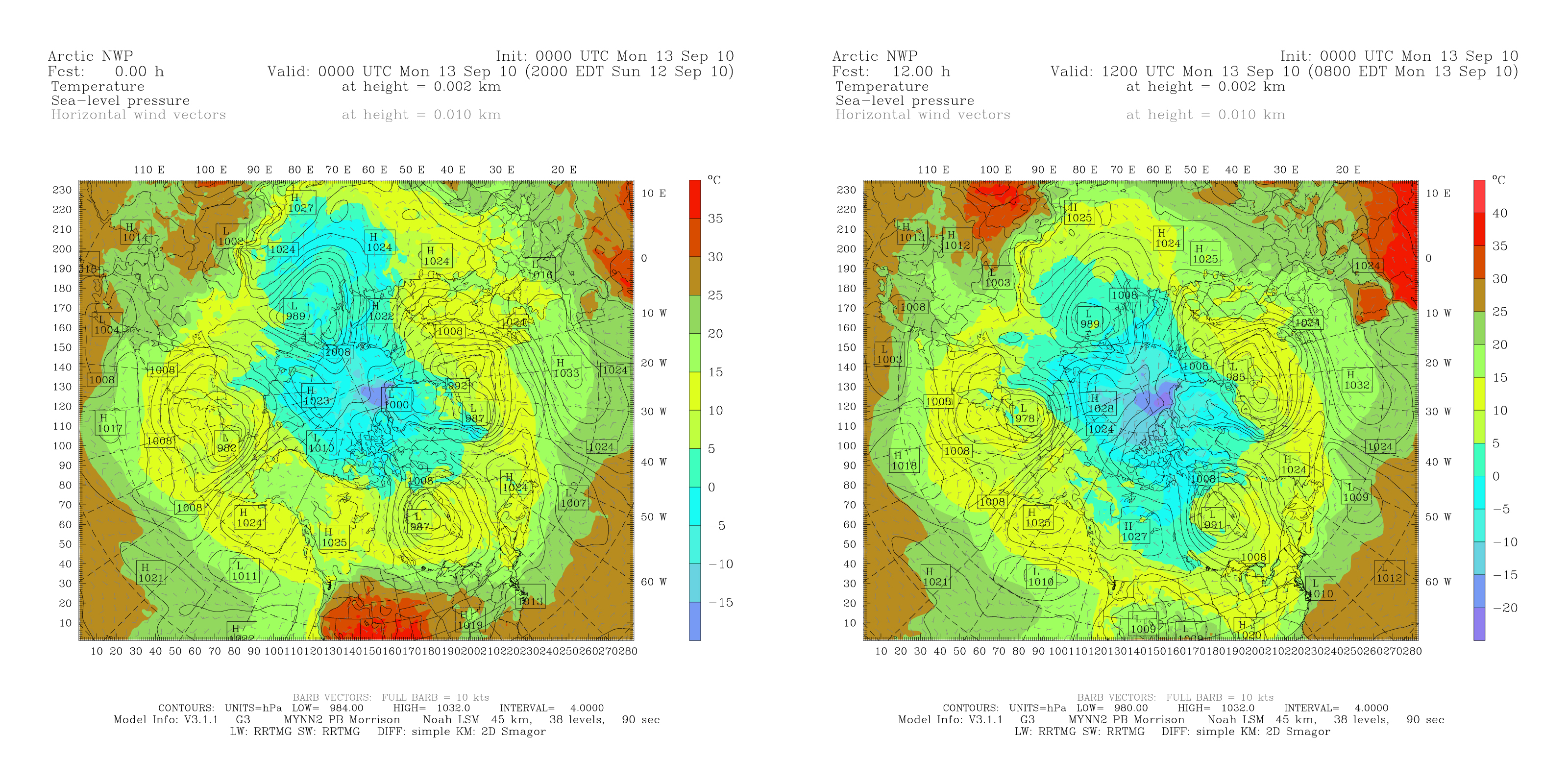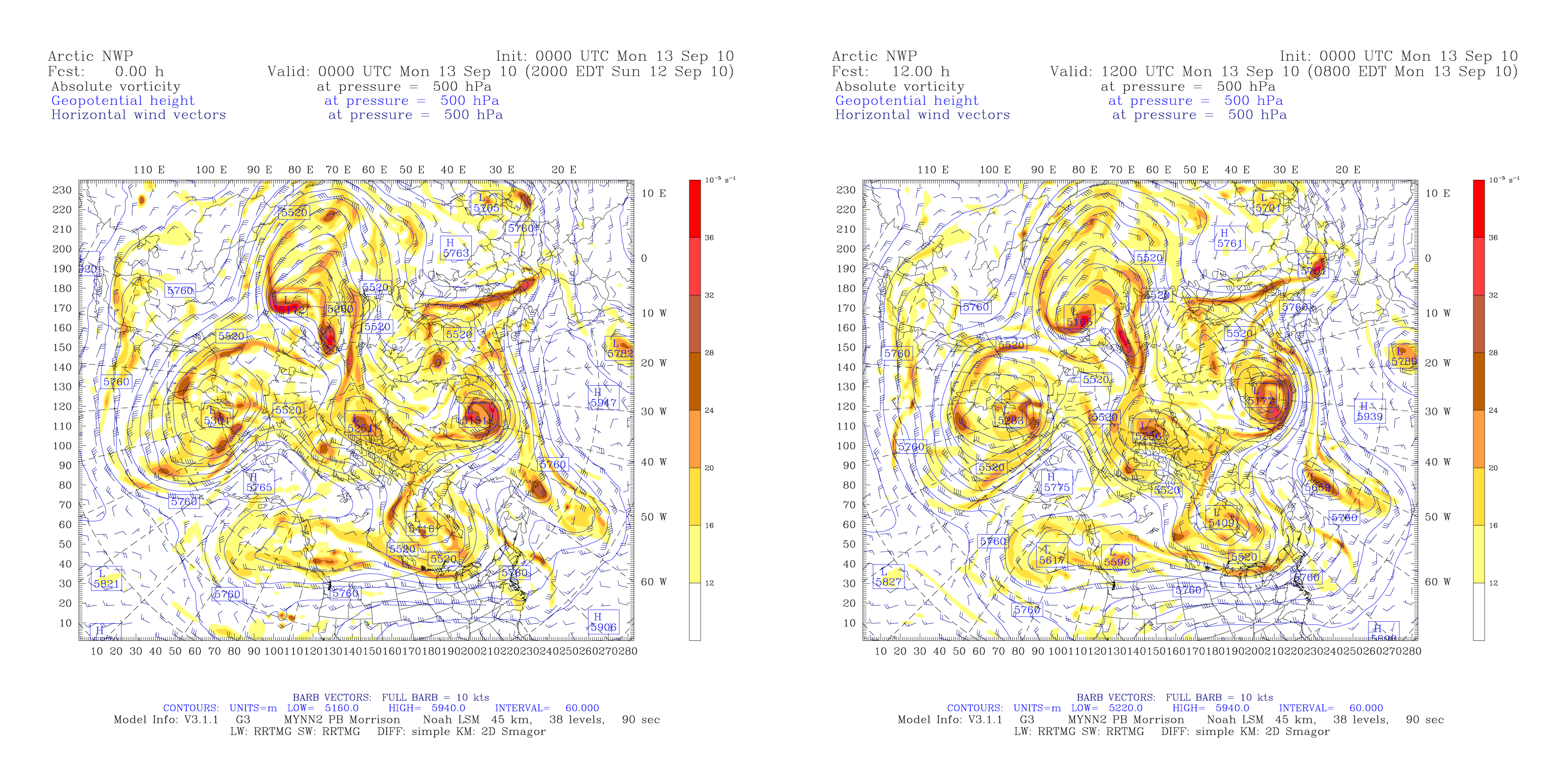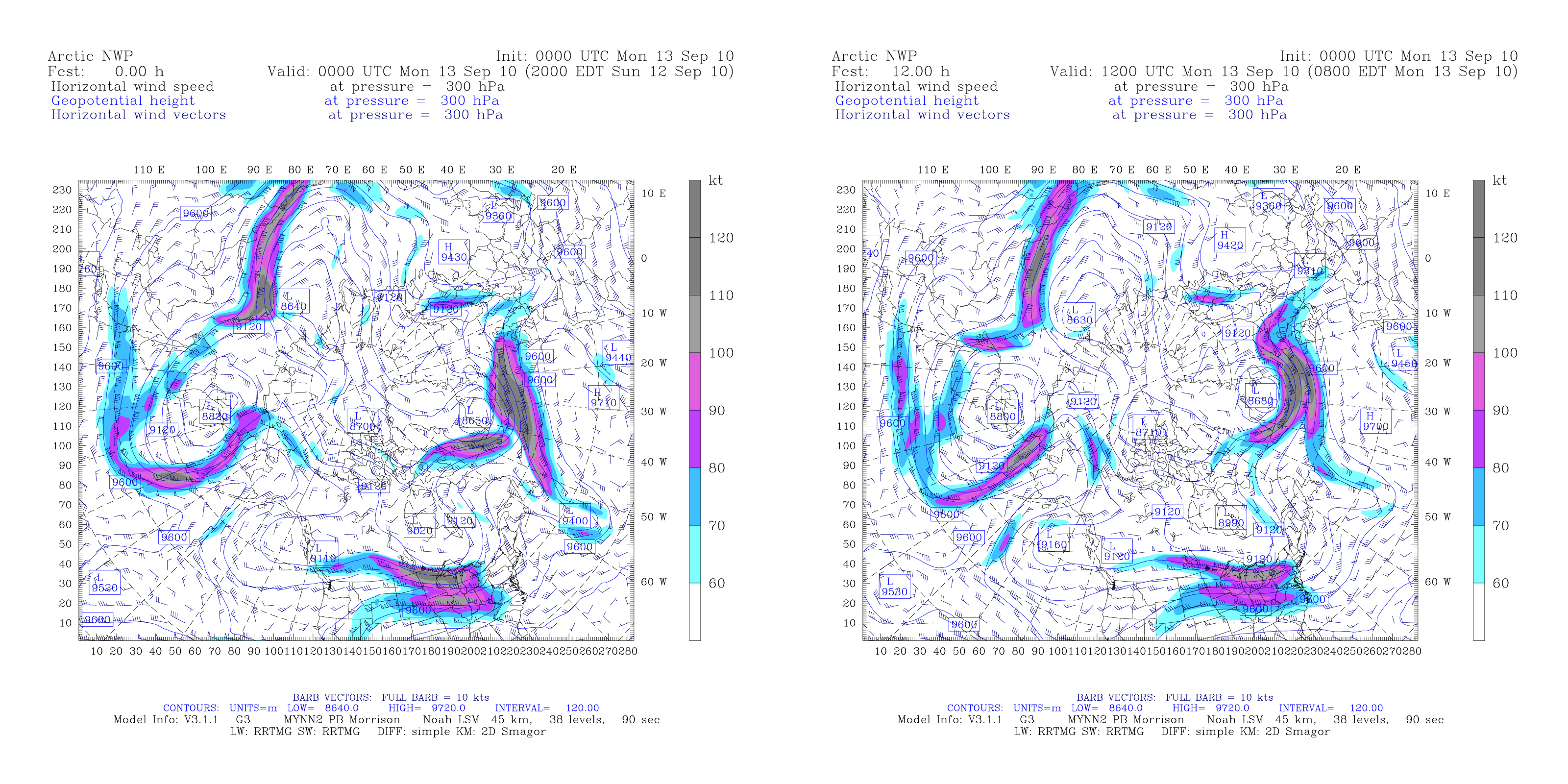Early in his career, David H. Bromwich trekked with fellow scientists through the extreme cold, cutting winds and limited daylight of the Earth’s polar regions. These days, he is perfectly content to analyze those inhospitable territories from a more temperate environment.

From his laboratory at The Ohio State University’s Byrd Polar Research Center (BPRC), the senior research scientist this week unveiled a low-resolution prototype of the first comprehensive climate reconstruction of the entire arctic system.
Bromwich and his Arctic System Reanalysis (ASR) research team are leveraging the powerful computing and storage resources of the Ohio Supercomputer Center (OSC) to synthesize historical weather data from a region of nearly 29-million square miles – everything north of Minneapolis, Minn.; Turin, Italy; and the Black Sea.
The team is integrating multiple enormous databases containing eleven years of satellite readings and direct observations of the Arctic atmosphere/sea-ice/land-surface system. The time period corresponds to the 1999 launch of the NASA spacecraft named Terra, a polar-orbiting climate research satellite.
When completed, Bromwich’s National Science Foundation project will provide a high-resolution description of the high-latitude expanse in dimensions of altitude (71 layers), space (every 10 kilometers) and time (every three hours).
“The ASR, which can be viewed as a blend of modeling and observations, will ingest historical data streams along with measurements of the physical components of the Arctic Observing Network developed as part of the global scientific project known as the International Polar Year,” explained Bromwich, who earned his doctorate in meteorology in 1979.
“With the introduction of space-borne measurements over the last few decades, researchers have been inundated with vast amounts of information. Today, the trick is to figure out how to effectively use all the diverse information sources.”
To generate the complex visualizations, the ASR group has processed the information using more than 1,000 cores of OSC’s IBM 1350 Opteron “Glenn Cluster” over the last couple of months. The data accumulated for and generated by the model eventually will fill hundreds of terabytes of disk space on the center’s IBM Mass Storage System.
“I think the model is giving very reasonable results,” said Lesheng Bai, a research associate at BPRC. “We’ve had to resolve several issues with the model physics, because of the challenging conditions in the Arctic. But, the model is running well at this coarse spatial resolution.”
Staff members at OSC have been responsible for installing and testing on the “Glenn Cluster” the state-of-the-art Weather Research and Forecasting (WRF) model. WRF is a numerical weather prediction system developed by a collaborative partnership that includes, among others, the National Center for Atmospheric Research (NCAR) and the National Oceanic and Atmospheric Administration (NOAA). The Polar WRF version of the model developed by BPRC was installed once the ASR group had completed extensive testing of the model over the Arctic Ocean and Alaska.
“We worked with Dr. Bromwich to provide benchmarking for the model in order to select the most efficient infrastructure configurations of the Glenn Cluster,” said Lin Li, an OSC systems engineer. “The staff optimized the programming code and developed a version control system for it. We also identified and implemented archiving strategies, both for on-site and partner-site storage systems.”
Producing the ASR has not been a one-shop job. In addition to the assistance of several post-doctoral research associates at BPRC, Bromwich also depends upon the contributions of colleagues at several other research organizations. Scientists at NCAR have been optimizing the system used to assimilate Arctic observations into Polar WRF and verified the integration of all the data streams. A colleague at the University of Illinois is responsible for some quality control, data archiving, data access and visualization issues. And, at the University of Colorado-Boulder, investigators focused on optimization, evaluation and testing.
“The ASR is ingesting and generating a large volume of data – creating about twenty terabytes of output per year, all of which we consider to be a community resource,” Bromwich said. “We will maintain the secure archive of all reanalysis data at OSC and develop web-based tools for access and analysis by the wider scientific community.”
Over the final year of the four-year project, Bromwich and his team will work to complete a high-resolution version of the model. He hopes the detailed information generated by the study contributes to a better understanding of climate shifts in the environmentally sensitive Arctic.
“The Arctic is in the midst of rapid change,” Bromwich noted. “There have been pronounced increases in surface air temperature, especially for winter and spring over subarctic land areas, as well as over the Arctic Ocean. It’s extremely important that we better understand what’s happening there in order to predict the future more accurately. Through data assimilation, the ASR will serve as a state-of-the-art synthesis tool for assessing Arctic climate variability and monitoring Arctic change.”
The Ohio Supercomputer Center (OSC) is a catalytic partner of Ohio universities and industries, providing a reliable high performance computing and high performance networking infrastructure for a diverse statewide/regional community including education, academic research, industry, and state government. OSC promotes and stimulates computational research and education in order to act as a key enabler for the state's aspirations in advanced technology, information systems, and advanced industries. For more, visit www.osc.edu.
The Byrd Polar Research Center (BPRC) at The Ohio State University is an internationally recognized leader in polar and alpine research conducted throughout the world. The center is named in honor of Admiral Richard E. Byrd, America's most famous polar explorer. Research at the Center focuses on the role of cold regions in the Earth's overall climate system, and encompasses geological sciences, geochemistry, glaciology, paleoclimatology, meteorology, remote sensing, ocean dynamics, and the history of polar exploration. For more, visit bprc.osu.edu.


